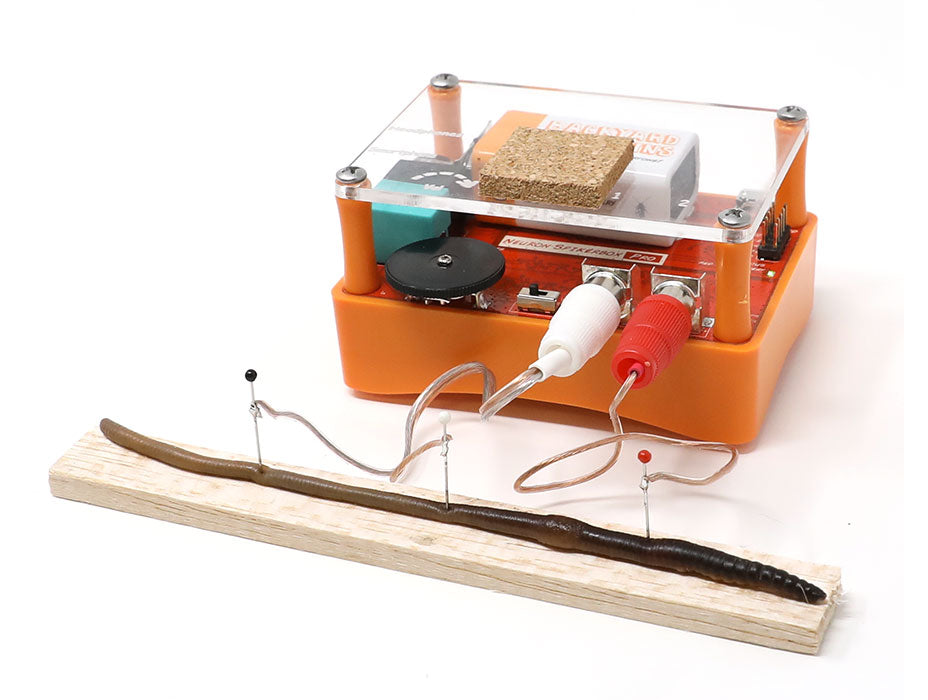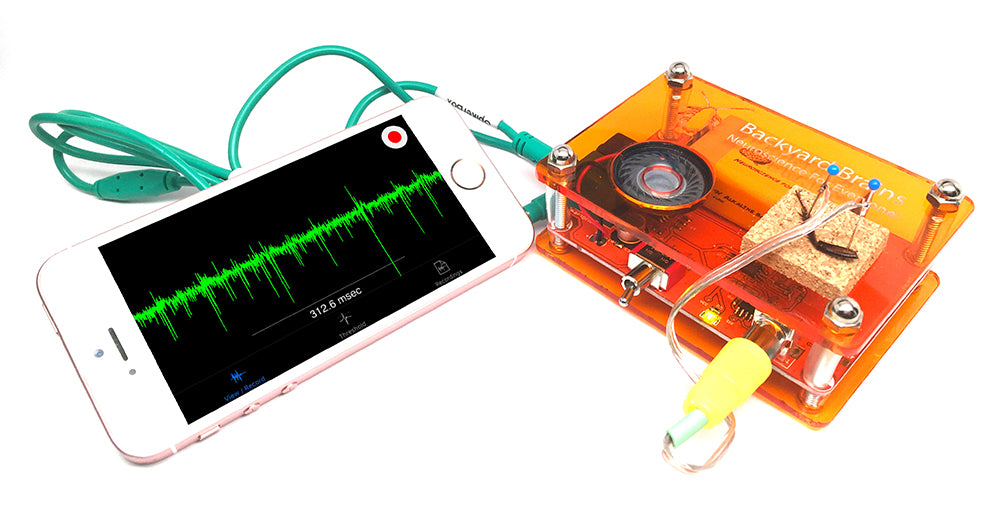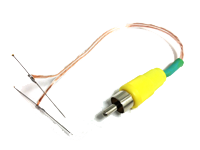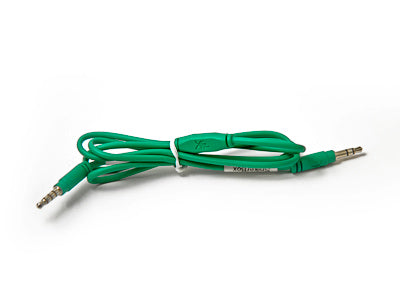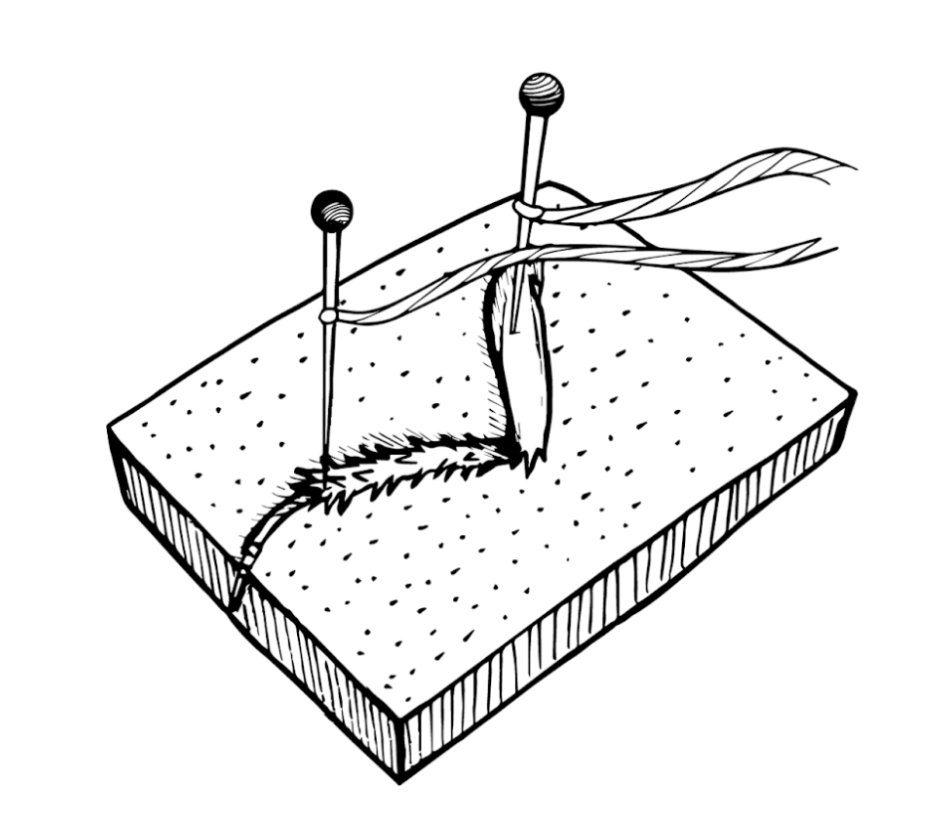
Referencing Your Spikes

Why do we need more than one electrode to measure neural activity? In this experiment you’ll explore reference electrodes and see how their placement shapes what you record.
About experiment
What Will You Learn?
- Voltage is always a difference between two points.
- Reference (ground) electrodes make those differences visible.
- Electrode placement governs the clarity and specificity of recordings.
Background
Voltage is the electrical pressure between two points. Your hair drifting toward a plastic comb on a dry day is a familiar example—electrons move from hair to comb, creating a charge difference. Because voltage is relative, every neural recording needs two electrodes: one to sense the signal and one to act as reference. The SpikerBox amplifies the difference so you can see spikes on the screen.
Experiment

Three Electrode Placements
Preparation
- Mount a cockroach leg on cork as in the Hear & See a Neuron experiment.
- Insert two pins far apart on the leg and connect to the SpikerBox (one recording, one ground).
Test 1 – Wide Spacing
Blow on the barbs or tap the leg and note how many neurons you hear and see.
Test 2 – Close Spacing on Femur
Keep one pin fixed; move the second next to it on the femur. Record again and compare signal clarity.
Test 3 – Both Pins in Coxa (or Tibia)
Place both pins in the coxa (or tibia if the coxa is missing) and repeat. Record your data and decide whether distance or location matters more.
What Did You Notice?
Were individual spikes clearer with close or wide spacing? Did certain parts of the leg yield stronger signals? Summarise your findings and think about how reference placement could influence human EEG, EMG or EKG recordings.
What do you need?
-
Related Products


